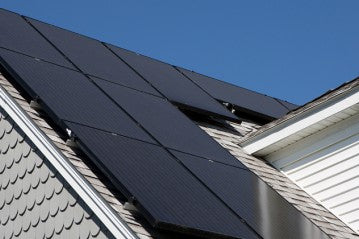
Inverters play a crucial role in renewable energy systems by converting direct current (DC) electricity into alternating current (AC) that can be used to power our homes, businesses, and communities. When it comes to inverters, there are two main types to consider: grid-tied inverters and off-grid inverters. Understanding the differences between these two types is essential for designing efficient and reliable renewable energy systems. In this blog post, we will delve into the key distinctions between grid-tied and off-grid inverters and explore their respective advantages and limitations.
Grid-Tied Inverters
Grid-tied inverters are designed to work in conjunction with the electrical grid. They convert DC power generated by solar panels or other renewable sources into AC power that can be fed into the grid. One of the main features of grid-tied inverters is their ability to synchronize the frequency and phase of the AC power they generate with that of the grid, allowing for seamless integration.
These inverters typically operate in a parallel configuration with the grid, ensuring a stable power supply to the connected load while excess power is sent back to the grid. This process is known as net metering, which enables homeowners or businesses to receive credit for the surplus energy they generate.
The advantages of grid-tied inverters are evident. They provide a cost-effective solution for renewable energy systems as they eliminate the need for energy storage systems, such as batteries. Grid-tied systems also allow for flexibility, enabling users to draw power from the grid when renewable energy generation is insufficient.
Off-Grid Inverters
Unlike grid-tied inverters, off-grid inverters are designed for standalone power systems that operate independently from the electrical grid. These inverters are essential in remote locations or areas with unreliable grid infrastructure, where access to the grid is limited or nonexistent. Off-grid inverters convert DC power generated by renewable energy sources into AC power for immediate use.
One key feature of off-grid inverters is their ability to store excess energy in battery banks for later use when renewable energy generation is low or unavailable. This energy storage capability ensures a continuous power supply, even during times of low renewable energy production. Off-grid systems are commonly used in cabins, remote dwellings, or in regions where grid connection is impractical or economically unfeasible.
The self-sustainability offered by off-grid inverters is a significant advantage. These systems provide independence from the grid, allowing users to generate and consume their own electricity. This can be particularly beneficial in reducing reliance on fossil fuel-powered generators in remote locations.
Key Differences Between Grid-Tied and Off-Grid Inverters
Electrical connectivity is a fundamental difference between grid-tied and off-grid inverters. Grid-tied inverters are designed to synchronize with the electrical grid, whereas off-grid inverters are isolated from the grid, creating a self-contained power system.
Energy storage and backup capabilities also vary between the two types of inverters. Grid-tied inverters do not require energy storage systems since surplus energy is fed back into the grid. In contrast, off-grid inverters incorporate battery banks to store excess energy for later use, ensuring a reliable power supply during periods of low renewable energy generation.
Grid dependency is another significant difference. Grid-tied systems rely on the availability and stability of the electrical grid. In the event of a grid outage, these inverters automatically shut down to prevent back-feeding and protect utility workers. On the other hand, off-grid systems offer independence from the grid, making them suitable for remote locations or areas with unreliable grid infrastructure.
When it comes to cost implications and system design considerations, grid-tied inverters are generally more cost-effective due to their simpler design and the absence of energy storage systems. Off-grid inverters, on the other hand, require additional investments in batteries and energy management systems, making them more expensive upfront.
Conclusion
In conclusion, understanding the differences between grid-tied and off-grid inverters is essential for designing and implementing efficient renewable energy systems. Grid-tied inverters offer the advantages of seamless integration with the grid, cost-effectiveness, and flexibility, while off-grid inverters provide independence from the grid, self-sustainability, and reliable power supply in remote locations.
Choosing the right type of inverter depends on various factors, including location, energy needs, and budget. Consulting with renewable energy professionals is highly recommended to ensure the selection of the most suitable inverter solution for individual requirements.
As we continue to transition towards a cleaner and more sustainable energy future, both grid-tied and off-grid inverters play crucial roles in harnessing renewable energy sources and reducing our reliance on fossil fuels. By understanding their differences, we can make informed decisions and contribute to a greener and more resilient energy landscape.
If you are looking for the best all-in-one inverter, look no further than Ecgsolax.
ECGSOLAX offers high quality all-in-one MPPT and PMW inverter in different specifications and models. If you are interested in our products, please contact us and learn more!

0 comments